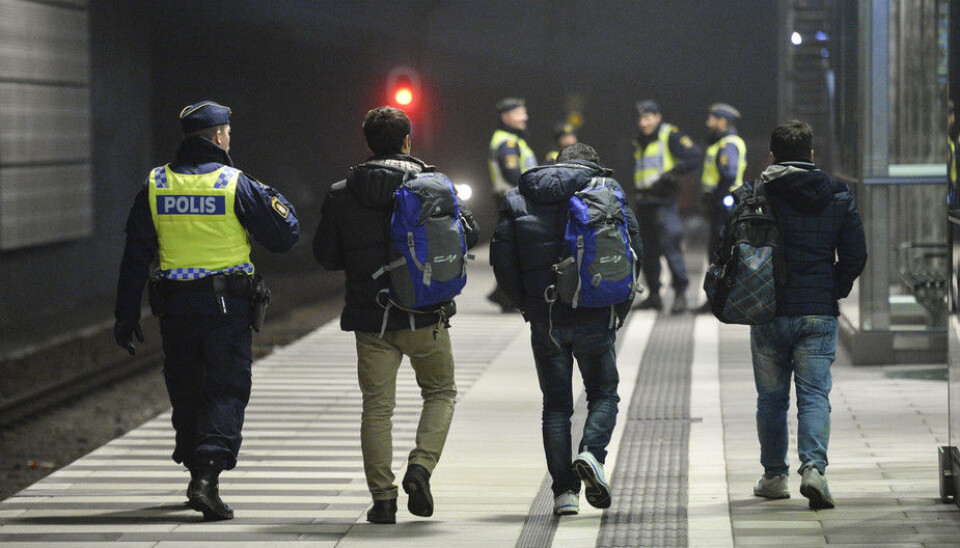
Taking on the challenge of getting refugees into the job market in Sweden
OPINION: Asylum seekers in Sweden are struggling to access the Swedish labour market. Researchers explain why, and what can be done to help them.
Sweden is one of the few countries in Europe that has provided protection to a large number of refugees fleeing the war zones of Syria, Afghanistan and Iraq.
Despite its relatively small population of 10 million, Sweden had the highest number of individuals seeking asylum per capita (163,000) in Europe in 2015. The large number of refugees who have gained residence in Sweden over the past couple of years constitute a major challenge to Swedish society and, especially to the Swedish labour market.
According to a recent report from the OECD, only 22% of newly-arrived men and 8% of women had employment after one or two years of introductory programmes. But the long-term employment rates of previously-arrived refugees in Sweden are more favourable and lead us to believe that the numbers above will grow within the next few years.
As reported by the Swedish Migration Delegation, only 30% of refugees who arrived between 1997 and 1999 were employed after two years of residency in Sweden, but this number jumped to 65% after ten years in the country. Despite the fact that this figure is still below the Swedish average employment rate of about 80%, it is illustrative of the gradual growth in employment rates for refugees.
The number of first-time asylum applications in Europe for 2015 reached 1.3 million, three times more than in 2013. The spike in arrivals in the past year has put significant pressure on receiving countries, such as Sweden and Germany, and on the resources allocated to integrate refugees. The main focus of introduction programmes in Sweden and other European countries has been on labour market integration.
Migration in Sweden
Of course, this is not the first time in history that Sweden has received large numbers of asylum seekers and tried to incorporate them into the labour market. During World War II and directly after, Sweden accepted refugees from Poland, Finland and the Baltic states, as well as Jewish refugees from Denmark and Norway. The goal of Swedish integration policies then was to employ and resettle refugees in parts of the country where there was a high demand for labour.
Since the 1950s, when Sweden accepted Hungarian refugees, and especially over the past three decades, Swedish integration policies have continued developing to become more encompassing and ambitious.
The current policy was adopted in 2010 with the goal of facilitating the integration of refugees into the Swedish job market. Refugees are offered an introduction program that includes basic Swedish language training and civic and labour market orientation courses for up to two years.
Why integration is hard
Despite these efforts, the labour market integration of refugees in general, and resettled refugees in particular, has been characterised as having a slower pace, compared to that of family reunion migrants and labour migrants. Of course, refugees – unlike labour migrants – are not selected primarily for their skills. It will naturally take longer for them to match the demand in the host country.
There are also other reasons why it’s harder for refugees to access the job market. For example, the skills and credentials of refugees quickly depreciate due to difficulties in getting their qualifications accredited in Sweden. Refugees are also treated less favourably than labour migrants or family reunion migrants by their host countries, and may have health issues due to the persecution they have suffered.
Studies on the integration of refugees in Sweden and other immigrant-receiving countries, such as Canada, the US, the Netherlands, the UK and Australia, also reveal substantial differences among immigrants based on their country of birth. In Sweden, for example, immigrants from former Yugoslavian countries show higher employment rates than those coming from Turkey, Iran or Iraq.
Successful integration rates also differ between subcategories of refugees: asylum refugees versus resettled refugees. The main difference between asylum refugees and resettled refugees is that the former apply for asylum at the border of the destination country whereas the latter are resettled from UNHCR refugee camps or elsewhere.
In 2007, the employment rates of male and female resettled refugees who had lived in Sweden for ten years were 67% and 74%, respectively, whereas the corresponding numbers for asylum refugees were 79% and 78%. These figures do not show the employment of reunited family members of refugees, as they are included under the family migration category.
The employment gap between the two refugee categories has been explained by differences in settlement policy. Resettled refugees are, upon arrival, located in municipalities where housing is available but where employment opportunities are often lacking.
Asylum refugees, on the other hand, are given a choice of where to live, and often choose bigger cities where they have relatives and friends who can help them through networks, contacts and advice. So asylum refugees tend to do better when it comes to integration.
Better integration
There is no doubt that the current refugee inflow into Sweden has put extra pressure on the Swedish job market.
Specific policy initiatives to speed up the labour market integration of newly-arrived refugees could include placing them in municipalities with low unemployment rates, better evaluating their skills, and improving language courses by connecting the courses directly to the needs of the job market.
Integration policies should address the specific knowledge gaps of newly arrived refugees in relation to labour market demand in order to reduce the mismatch between their skills and those needed in the Swedish job market.
All this will be beneficial not only for refugees but also for Swedish society as a whole.
This is the third in a series of articles in partnership with UNU-WIDER and EconFilms on responding to crises worldwide.
![]()

This article was originally published on The Conversation. Read the original article.
Nahikari Irastorza has received funding from the Basque Government and the EU under the 7th Framework Programme.
Pieter Bevelander receives funding from New Opportunities for Research Funding Agency Co-operation in Europe.










